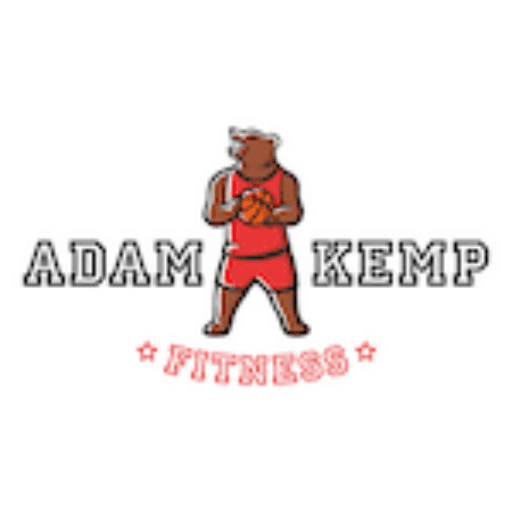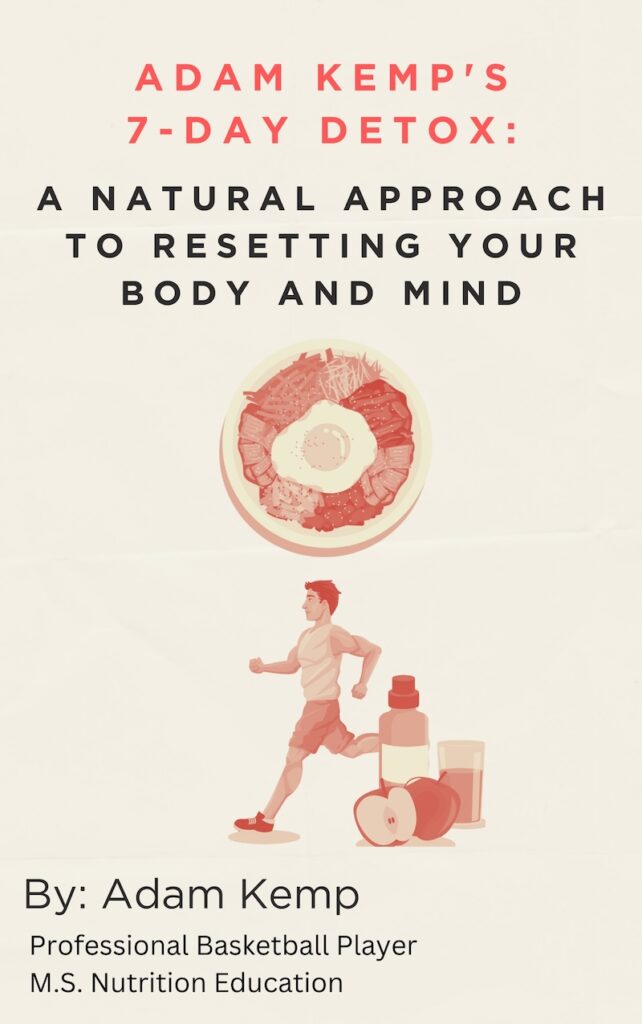Health And Fitness Tips & Advice for Better Quality of Life
Health and fitness are the foundation for living a long, capable, and fulfilling life.
They’re not just about how you look; they’re about how you function, how you feel, and how well you can engage with the world around you.
True health includes physical strength, mental resilience, emotional balance, and a lifestyle that supports energy, recovery, and purpose.
When you take care of your body through movement, nutrition, sleep, and stress management, you reduce your risk for chronic disease, improve daily performance, and increase your chances of living a longer and more independent life.
Likewise, fitness isn’t a short-term goal.
It’s a lifelong investment in your quality of life.
As a professional athlete with a Master’s Degree in Nutrition Education, I’ve experienced firsthand how consistent health habits shape every part of your life.
From athletic performance to emotional well-being, these habits matter.
Whether you’re just starting your journey or refining your approach, understanding the deeper meaning and value of health and fitness is the first step toward a real, lasting transformation.
What is Health and Fitness?
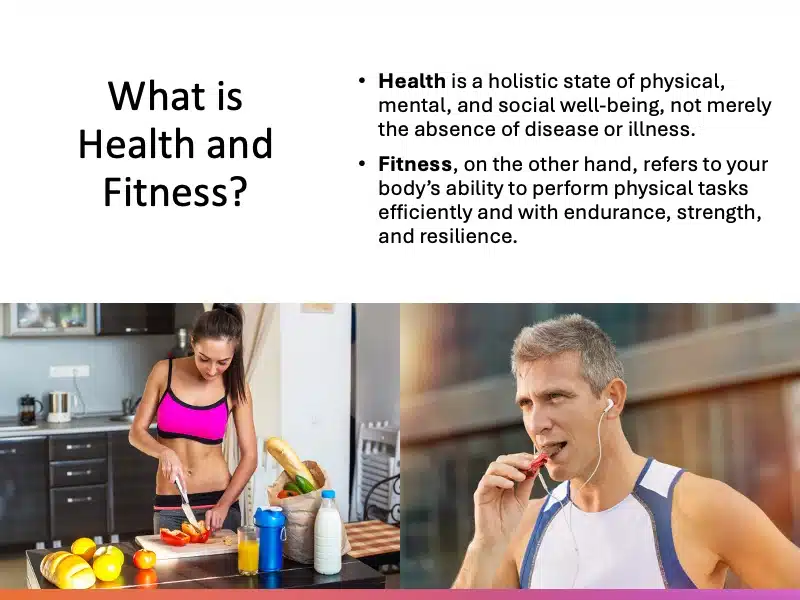
- Health is a holistic state of physical, mental, and social well-being, not merely the absence of disease or illness.
- Fitness, on the other hand, refers to your body’s ability to perform physical tasks efficiently and with endurance, strength, and resilience.
Together, health and fitness are dynamic states that require continuous adaptation, care, and attention.
Top 10 Benefits of Prioritizing Health and Fitness in Your Life
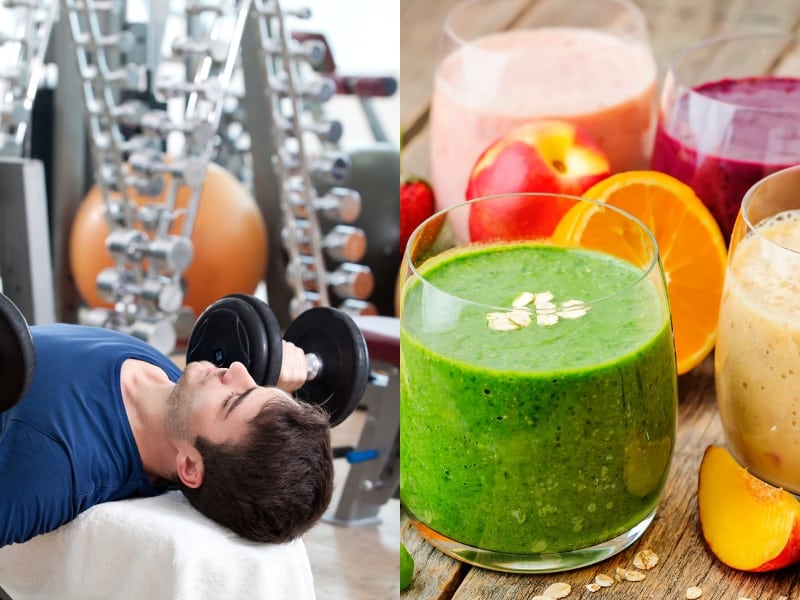
Health and fitness influence nearly every aspect of life, from how long you live to how well you sleep and how confidently you face daily challenges.
A consistent, well-rounded wellness routine provides physical, mental, emotional, and even financial benefits that compound over time.
Whether you’re focused on peak athletic performance or simply aging well, these are the most impactful reasons to take your health and fitness seriously:
1.) Longer Lifespan and Reduced Risk of Chronic Disease
Regular exercise and healthy lifestyle choices significantly reduce the risk of many leading causes of death, including heart disease, stroke, Type 2 diabetes, and several forms of cancer.
Even modest increases in physical activity are associated with extended lifespan and improved disease prevention outcomes (National Institute on Aging, 2025).
Incorporating just 30 minutes of moderate-intensity activity most days of the week can add years to your life and improve the quality of those years.
Combined with proper nutrition and stress management, this creates a powerful shield against chronic illness and age-related decline.
2.) Improved Quality of Life
Health and fitness empower you to enjoy life with greater ease and energy.
You’ll move better, feel more capable, and experience fewer physical limitations.
This freedom allows you to participate fully in activities you love, from playing with your kids to pursuing hobbies and adventures without pain or fatigue.
Regular movement also helps manage aches, stiffness, and fatigue that accumulate with a sedentary lifestyle, making daily life far more enjoyable.
3.) Better Mental Health and Emotional Resilience
Exercise is a natural antidepressant and anti-anxiety tool.
It reduces stress hormones like cortisol, increases feel-good chemicals such as serotonin and dopamine, and improves brain plasticity.
Over time, consistent movement supports emotional balance, cognitive sharpness, and the ability to handle life’s inevitable challenges.
For people dealing with mental health conditions, fitness can serve as a therapeutic tool that complements professional treatment and reduces reliance on medication.
4.) Lower Healthcare Costs Over Time

Investing in your health today saves money in the long run.
Preventive care through fitness and nutrition reduces the need for prescription medications, hospital visits, surgeries, and treatments for lifestyle-related diseases.
Studies show that people who maintain a healthy weight and stay physically active incur significantly lower healthcare costs throughout their lives (Duijvestjin et al., 2023).
Reducing your risk of chronic conditions through daily habits is not only empowering, it’s financially smart.
5.) Stronger Immune Function
Regular physical activity supports a more robust immune system by improving circulation, enhancing lymphatic drainage, and regulating inflammation.
This helps your body fight infections more effectively and bounce back faster from illness or injury.
Moderate exercise is particularly effective in boosting immune surveillance, which is involved in identifying and removing harmful pathogens and even early-stage cancer cells.
In contrast, sedentary behavior is linked to immune suppression, making movement essential for long-term vitality (Campbell & Turner, 2018).
6.) Better Sleep and Recovery
Exercise improves sleep efficiency and helps regulate your circadian rhythm, making it easier to fall asleep and stay asleep.
Quality sleep is essential for muscle repair, hormone regulation, and brain health, creating a positive feedback loop between sleep, recovery, and fitness progress.
Regular physical activity has been shown to reduce insomnia symptoms and improve overall sleep satisfaction (Alnawwar, 2023).
The more consistent your training schedule, the more likely you are to enjoy deep, restorative rest that supports every system in your body.
7.) Higher Energy Levels and Less Fatigue
Staying active enhances mitochondrial density in muscle cells, allowing your body to produce more energy and feel less tired throughout the day (Huertas et al., 2019).
People who work out consistently often report feeling more energized and focused in both work and daily tasks (Wender et al., 2022).
Regular movement also improves blood flow, delivering oxygen and nutrients more efficiently to your brain and muscles.
As your cardiovascular endurance and muscular capacity increase, your body learns to use energy more effectively, leaving you more vibrant and alert.
8.) Increased Confidence and Self-Efficacy
Health and fitness routines build confidence, discipline, willpower, and a sense of accomplishment.
Whether you’re hitting a new personal record in the gym or simply sticking to a healthy habit, each win boosts your self-esteem and reinforces your ability to succeed in other areas of life.
Developing physical competence transfers to mental and emotional confidence, helping you feel more capable in everyday situations.
When your body feels strong and resilient, your mindset follows, creating a more empowered, optimistic outlook.
9.) Reduced Risk of Injury and Improved Mobility
Strength training, flexibility, balance, and mobility work improve joint stability, posture, and motor control.
These physical improvements dramatically lower your chances of falls, sprains, or overuse injuries, especially as you age or return to sport.
A structured fitness routine strengthens connective tissues and muscles, correcting imbalances that could lead to compensation and breakdown over time.
Fitness is injury prevention, and it allows you to stay active and independent well into your later years.
10.) Stronger Social Connections and Community
Group fitness classes, recreational sports, walking groups, and online health communities foster social engagement.
Connection and accountability are powerful motivators that also support mental health and overall happiness, making fitness both a personal and communal experience.
Sharing movement with others creates a sense of belonging, support, and camaraderie that’s hard to replicate elsewhere.
Whether it’s bonding with gym partners, meeting friends for a run, or joining a wellness group online, fitness strengthens the bonds that keep us grounded and motivated.
The Four Key Pillars of Physical Fitness
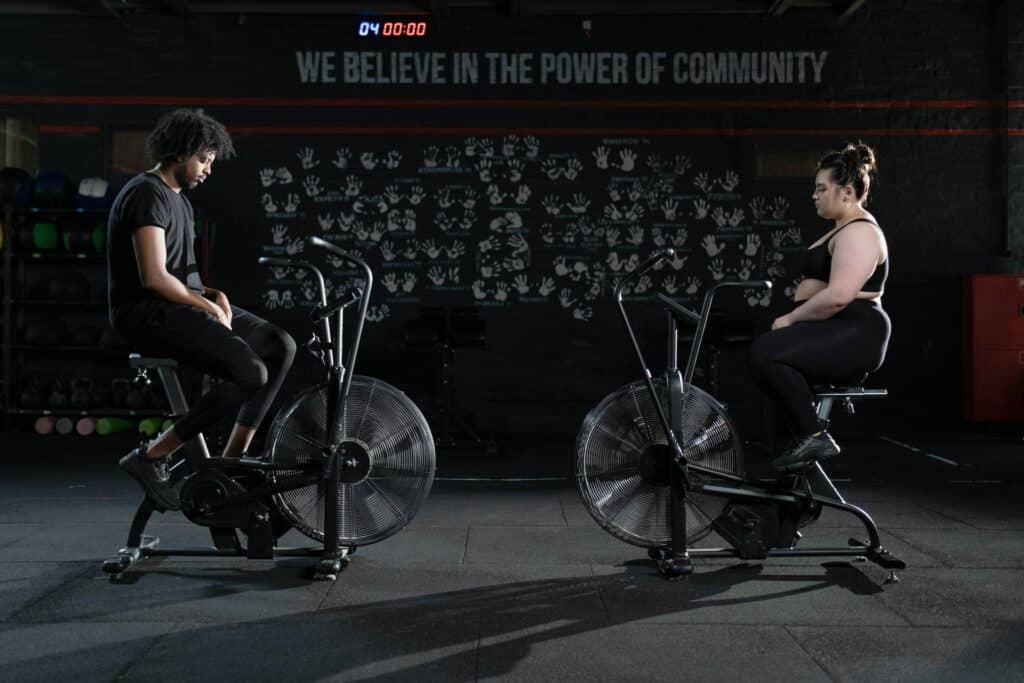
True physical fitness goes beyond building muscle or running a few miles.
To develop a body that performs well, resists injury, and supports long-term health, your training program needs to address multiple dimensions of movement.
That’s why a balanced fitness routine is built on four foundational pillars:
- Cardiovascular Endurance
- Muscular Strength
- Balance
- Flexibility
Each of these components plays a unique role in how your body functions, recovers and adapts.
Together, they create the structure for athletic performance, daily movement efficiency, injury prevention, and healthy aging.
As someone who has trained for performance at the highest levels while also working through injury and recovery, I’ve learned the value of not neglecting any one pillar because true fitness is about how all the pieces fit together.
Whether you’re just getting started or looking to optimize your training, understanding these four pillars will help you create a sustainable, effective, and complete fitness plan.
Cardiovascular Exercise
Cardiovascular exercise, often referred to as “cardio” or “endurance training,” is essential for keeping your heart, lungs, and circulatory system strong and efficient.
During aerobic activity, large muscle groups are engaged in rhythmic motion for sustained periods, which elevates your heart rate and breathing.
Over time, consistent cardio training strengthens the myocardium (heart muscle), improves VO₂ max (your body’s ability to use oxygen), and improves capillary density in working muscles, allowing for better nutrient and oxygen delivery throughout the body (Pinckard et al., 2019).
Key Benefits
- Improved heart health: Reduces resting heart rate, blood pressure, and LDL cholesterol while increasing HDL cholesterol.
- Reduced risk of chronic disease: Decreases the likelihood of developing heart disease, stroke, Type 2 diabetes, obesity, and certain cancers.
- Mental clarity and mood elevation: Promotes the release of endorphins, dopamine, and serotonin, helping to reduce symptoms of anxiety and depression.
- Weight management: Supports fat oxidation and helps control body weight through increased total daily energy expenditure (TDEE).
Practical Examples
- Brisk walking, especially in nature
- Jogging or treadmill workouts
- Cycling (outdoors or on a stationary bike)
- Dancing, Zumba, or step aerobics
- Swimming or water aerobics
- ERG rowing machines
- Hiking or hill climbing
- Pickleball, tennis, or recreational sports
Guidelines
The NIH recommends at least 150 minutes of moderate-intensity aerobic activity per week, or 75 minutes of vigorous-intensity exercise, spread throughout the week (National Institute on Aging, 2025).
Shorter bouts of movement, like 10-minute walks after meals, also add up and improve health outcomes.
Muscle-Strengthening Activities
Muscle-strengthening exercises, also known as resistance or strength training, involve contracting muscles against an external force.
This type of training is crucial for preserving lean muscle mass, improving metabolism, enhancing functional strength, and maintaining mobility as we age.
When you lift weights or use resistance bands, your muscle fibers undergo controlled micro-damage.
This prompts the body to repair and rebuild those fibers stronger and thicker, a process known as muscle hypertrophy (Schoenfield, 2010).
Key Benefits
- Increased muscular strength and power: Essential for performing daily tasks and supporting joint stability.
- Improved metabolic rate: Muscle is metabolically active tissue, and increasing lean mass raises your resting metabolic rate.
- Insulin sensitivity: Strength training increases glucose uptake by muscle cells, reducing blood sugar and lowering Type 2 diabetes risk.
- Bone density and joint health: Promotes osteogenesis (new bone formation), protecting against osteoporosis and arthritis.
- Postural alignment and injury prevention: Strengthens core stabilizers and reduces imbalances that lead to injury.
Practical Examples
- Bodyweight exercises: Push-ups, pull-ups, planks, air squats, lunges
- Resistance bands: Ideal for travel or beginners
- Dumbbell, barbell, or kettlebell exercises
- Cable machines or weight machines
- Functional activities: Carrying groceries, shoveling snow, lifting children
- Reformer Pilates or TRX suspension training
Guidelines
Aim for at least two non-consecutive days per week of full-body strength training, covering major muscle groups (legs, hips, back, chest, shoulders, arms, and core).
For most people, 1–3 sets of 8–12 reps at a moderate-to-challenging intensity is a great starting point.
Allow 48 hours of rest between sessions targeting the same muscle group.
Balance Training
Balance is often overlooked until it becomes a problem, especially with aging.
However, balance training is vital for coordination, fall prevention, and neuromuscular control. It improves the body’s ability to stabilize during both static positions (like standing on one foot) and dynamic movements (like walking or changing direction).
Balance involves a complex interaction between the vestibular system (inner ear), proprioceptors (position sensors in joints and muscles), vision, and core muscle activation (Institute for Quality and Efficiency in Health Care, 2006).
Training these systems keeps your movements smooth, safe, and efficient.
Key Benefits
- Fall prevention and joint protection: Especially important for older adults, athletes, and people recovering from injury.
- Improved coordination and agility: Improves performance in sports and daily activities.
- Stronger core and stabilizers: Improves posture, reduces low-back pain, and supports better lifting mechanics.
Practical Examples
- Standing on one foot or with eyes closed
- Heel-to-toe walking (tightrope walk)
- Balance walks (walking backward or sideways)
- Wobble boards, BOSU balls, or balance pads
- Single-leg exercises
Guidelines
Include balance training at least 2–3 times per week.
These exercises can be performed on their own or integrated into strength and mobility routines.
Regular balance training is an especially important part of safe fitness for seniors as it reduces fall-related injuries and helps maintain independence.
Flexibility and Mobility
Flexibility refers to the length of your muscles, while mobility refers to the range of motion within your joints.
Together, they allow your body to move fluidly and without restriction.
Regular flexibility and mobility work reduce stiffness, improve biomechanics, and protect against movement dysfunctions.
Unlike static stretching alone, mobility exercises often combine movement with stretching to improve joint health and functional range.
Key Benefits
- Injury prevention and joint protection: Reduces excessive tension and wear on muscles, tendons, and ligaments.
- Better movement quality: Supports proper technique in strength and cardio workouts.
- Recovery and circulation: Eases muscle soreness and improves nutrient delivery to soft tissues.
- Aging gracefully: Maintains independence by allowing you to perform daily tasks like reaching, bending, and walking with ease.
Practical Examples
- Dynamic warm-ups: Leg swings, arm circles, inchworms
- Static stretching: Hamstring stretch, hip flexor stretch, chest opener
- Foam rolling and myofascial release
- Mobility exercises, flows and workouts (e.g., the world’s greatest stretch)
- PNF stretching (Proprioceptive Neuromuscular Facilitation)
Guidelines
Incorporate mobility work before training and flexibility work after.
Stretch warm muscles (never cold), hold stretches for 15–30 seconds, and avoid bouncing.
Aim to stretch all major muscle groups at least 2–3 times per week or daily for best results (especially for tight or chronically shortened areas).
The Importance of Mental Health and Fitness
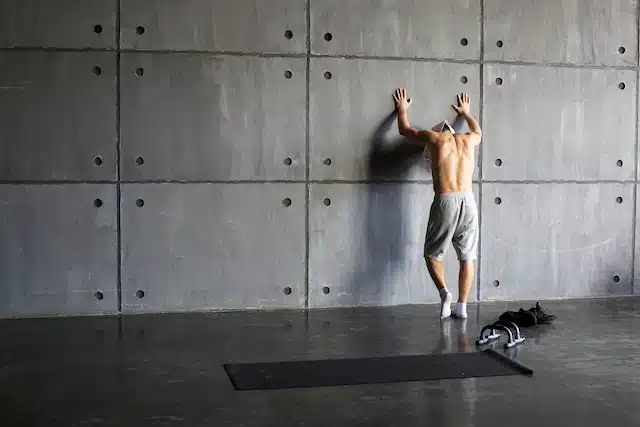
While physical health and fitness often take the spotlight in health discussions, mental health and fitness are just as crucial and arguably even more foundational.
The state of your mental health influences everything from how well you sleep and digest food to how you perform at work, interact with others, and handle stress.
Mental fitness isn’t simply the absence of mental illness.
It refers to the strength, flexibility, and resilience of the mind, and the ability to manage stress, focus attention, regulate emotions, and bounce back from challenges.
Just like your muscles grow stronger with consistent training, mental health, and cognitive resilience can be developed through intentional daily habits.
What is the Mind-Body Connection & How Does Mental Health Affect Physical Health?
The brain and body are in constant communication through the neuroendocrine system, vagus nerve, and immune system.
When mental health suffers, this communication breaks down and leads to physical consequences:
- Chronic stress increases cortisol and adrenaline, which can suppress immune function, raise blood pressure, and promote fat storage — particularly visceral fat.
- Anxiety and depression are associated with increased systemic inflammation and oxidative stress, which are underlying contributors to cardiovascular disease, metabolic dysfunction, and accelerated aging.
- Poor mental health often results in unhealthy behaviors such as poor nutrition, lack of exercise, substance abuse, or irregular sleep — all of which negatively impact physical well-being.
Studies show that untreated psychological stress is a major risk factor for heart disease, obesity, autoimmune conditions, and even early mortality (Cohen et al., 2012).
Conversely, better mental health is associated with longer lifespan, improved quality of life, and reduced medical costs.
Strong mental health helps you:
- Stick with long-term fitness goals
- Avoid burnout or overtraining
- Recognize when you need rest or support
- Handle setbacks with perspective and adaptability
Just as we program strength training, cardio, or recovery days into our physical training, we need to schedule mental fitness routines.
These are not luxuries, they are foundational elements for success, happiness, and longevity.
5 Pillars of Mental Health and Fitness
Building a strong mind requires the same level of intention, discipline, and care as building a strong body.
These five pillars of mental health and fitness represent the foundational habits that support emotional balance, cognitive performance, and psychological resilience.
From quality sleep and mindfulness to movement, connection, and emotional expression, each pillar plays a vital role in how your brain and body work together under stress or adversity.
As a professional athlete and advocate for holistic health, I’ve seen how these mental fitness strategies not only improve athletic performance, but also promote peace of mind, purpose, and long-term vitality.
Whether you’re managing daily stress or striving to reach a new personal best, these five pillars will help you build a healthier, more resilient mind, one habit at a time.
1.) Mindfulness and Meditation
Mindfulness training involves paying attention to the present moment without judgment.
This helps reduce rumination and increases cognitive control.
Research has shown that just 10–20 minutes of daily mindfulness meditation can reduce symptoms of anxiety, improve emotional regulation, and even alter the structure of the brain in areas responsible for attention and empathy (Tang et al., 2015).
Common practices include:
- Breath-focused meditation
- Body scans
- Guided imagery
- Mindful walking or eating
- Prayer
- Progressive muscle relaxation
Prayer, particularly within the Christian faith, is a spiritually grounded form of mindfulness that adds connection, purpose, and trust.
It has been associated with improved mental health, greater life satisfaction, and even longer lifespans (Dominguez et al., 2024).
Unlike secular mindfulness, prayer offers not just self-awareness but divine assurance. Scripture reminds us:
“Cast all your anxiety on Him because He cares for you” (1 Peter 5:7, NIV).
For many, prayer serves as a powerful way to release stress, process emotions, and lean into the peace of knowing that God is actively working on their behalf:
“Come to me, all you who are weary and burdened, and I will give you rest” (Matthew 11:28, NIV).
These strategies lower heart rate variability (HRV), calm the sympathetic nervous system and activate the parasympathetic “rest and digest” state, which is a cornerstone of recovery and well-being.
2.) Sleep Hygiene
Sleep is a non-negotiable pillar of mental health.
During deep sleep, the brain performs vital housekeeping tasks, including clearing metabolic waste and consolidating memories.
Poor sleep impairs mood regulation, decreases focus, and increases the risk of depression, anxiety, and cognitive decline (NIH).
Essential sleep hygiene habits:
- Going to bed and waking at consistent times
- Avoiding screens and bright lights before bed
- Creating a cool, dark, quiet sleep environment
- Limiting caffeine and alcohol intake in the evening
For athletes and high performers, optimizing sleep is also linked to faster physical recovery, better reaction times, and lower injury risk (Charest & Grandner, 2020).
For those struggling to unwind, evidence-based strategies like creating a wind-down routine, eliminating blue light, and using calming supplements can make a huge difference.
One of the most effective natural sleep aids is magnesium, which supports nervous system regulation and promotes muscle relaxation.
I personally recommend Qunol Magnesium Glycinate (420mg) for its high absorbability and calming effect without digestive side effects.
Studies have shown magnesium supplements improve sleep onset, duration, and overall sleep quality, especially in people experiencing insomnia or elevated stress (Abbasi et al., 2012).
Incorporating it into your nightly routine, alongside practices like foam rolling, herbal teas, prayer, or guided meditation, can help activate your body’s parasympathetic nervous system, reduce nighttime anxiety, and ensure you wake up feeling refreshed and recovered.
Last update on 2025-04-15 / This article includes affiliate links/Images via Amazon Product Advertising API. I may earn commissions on purchases made through these links.
3.) Emotional Expression and Journaling
Journaling can serve as a powerful outlet for processing emotions, clarifying goals, and reducing anxiety.
Expressive writing has been shown to decrease stress hormones, improve immune markers, and even speed up recovery from physical wounds (Pennebaker & Smyth, 2016).
Try these approaches:
- Gratitude journaling
- Goal setting and progress tracking
- Writing about emotional experiences to reduce emotional suppression
Using the SMART goals framework (Specific, Measurable, Achievable, Relevant, and Time-bound) within your journal can provide structure and direction, making your intentions more actionable.

Regularly reviewing your goals and logging small wins helps maintain motivation, build consistency, and reinforce a sense of accomplishment, even during challenging periods.
These practices also help develop emotional intelligence and the ability to understand and manage one’s own emotions and those of others, which is a key trait of mentally strong individuals.
4.) Social Connection
Humans are inherently social beings.
Positive social interactions are essential for emotional stability, cognitive function, and even immune strength.
Loneliness and isolation are as dangerous as smoking 15 cigarettes a day, according to some public health analyses (Holt-Lunstad et al., 2015).
Mental fitness grows in strong, supportive communities.
Whether it’s your family, teammates, a faith-based group, or close friends, connection builds resilience.
Ways to build stronger social support:
- Schedule regular check-ins with loved ones
- Join a fitness class, book club, or faith group
- Volunteer or mentor someone in your community
- Be open to expressing vulnerability and asking for help
5.) Movement as Medicine
Physical exercise isn’t just about muscles, it’s one of the most effective tools for improving mental health.
In some studies, aerobic exercise has been shown to reduce depressive symptoms as effectively as medication (Blumenthal et al., 2007).
It stimulates the release of brain-derived neurotrophic factor (BDNF), a protein that enhances brain plasticity, learning, and memory.
Even light movement, like a 10-minute walk, can significantly elevate mood and energy levels.
Strength training also improves self-efficacy, confidence, and resilience.
How to Eat a Healthy Diet that Supports Overall Health and Fitness
A healthy, well-balanced diet is the cornerstone of long-term health, physical performance, and mental clarity.
The food you eat directly affects your energy levels, hormonal balance, immune strength, gut health, and ability to recover from training or daily stress.
Whether you’re an athlete, a busy parent, or simply striving for better vitality, eating intentionally can help you feel, move, and live better.
Here are key principles to guide a nutrition plan that supports your health and fitness goals:
Focus on Whole, Minimally Processed Foods
Build the foundation of your diet around whole foods, like vegetables, fruits, quality proteins, whole grains, healthy fats, legumes, and nuts.
These foods provide the micronutrients, antioxidants, and fiber your body needs to function optimally and defend against chronic diseases.
Ultra-processed foods, which are often high in refined sugars, inflammatory oils, and artificial additives, can disrupt metabolic health, impair digestion, and increase the risk of obesity and other chronic conditions (Asensi et al., 2023).
Prioritize Protein at Every Meal
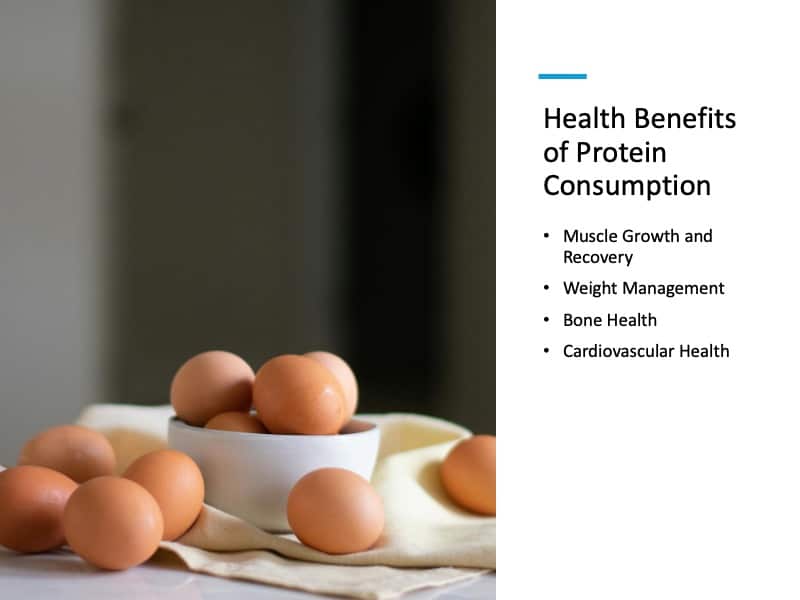
Protein is essential for building and repairing muscle tissue, supporting satiety, and stabilizing blood sugar levels.
For active individuals and athletes, aim for 0.7 to 1.0 grams of protein per pound of body weight daily, depending on your training load and goals.
Include a variety of protein sources such as lean meats, poultry, eggs, Greek yogurt, cottage cheese, fish, lentils, beans, and plant-based protein powders.
A well-distributed intake across the day ensures optimal muscle protein synthesis and better recovery.
Eat for Energy and Performance
Carbohydrates are your body’s preferred energy source for intense workouts and recovery.
Focus on complex carbs like oats, brown rice, sweet potatoes, quinoa, and fruit to fuel your muscles and stabilize energy levels.
Pairing carbs with protein post-workout replenishes glycogen stores and promotes recovery.
Don’t fear carbohydrates, when timed properly, they are essential for maintaining strength, endurance, and cognitive sharpness.
Incorporate Healthy Fats
Dietary fats support hormone production, brain function, and the absorption of fat-soluble vitamins (A, D, E, K).
Include sources like avocados, olive oil, nuts, seeds, fatty fish, and pasture-raised eggs.
Avoid industrial seed oils (such as soybean, canola, and corn oil) when possible, as they can contribute to systemic inflammation, especially when consumed in excess.
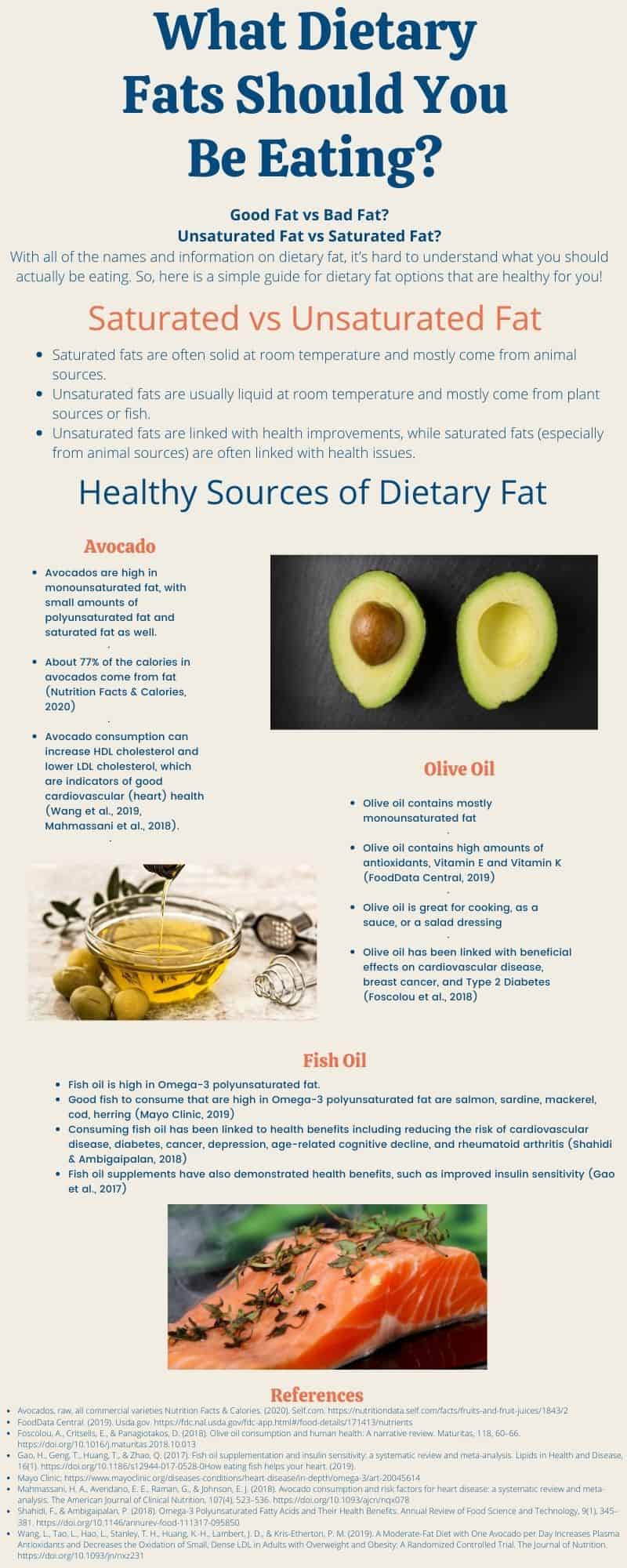
Hydrate Strategically
Nutrition and hydration are closely linked.
Aim to drink half your body weight in ounces of water per day, and more if you sweat heavily or consume a high-protein diet.
Add electrolytes (like sodium, potassium, and magnesium) around workouts or during high-heat conditions to maintain fluid balance and muscle function.
My favorite electrolyte drink is Celsius Hydration packets.
Last update on 2025-04-15 / This article includes affiliate links/Images via Amazon Product Advertising API. I may earn commissions on purchases made through these links.
Water supports digestion, joint health, nutrient transport, and thermoregulation — making it essential for performance and recovery.
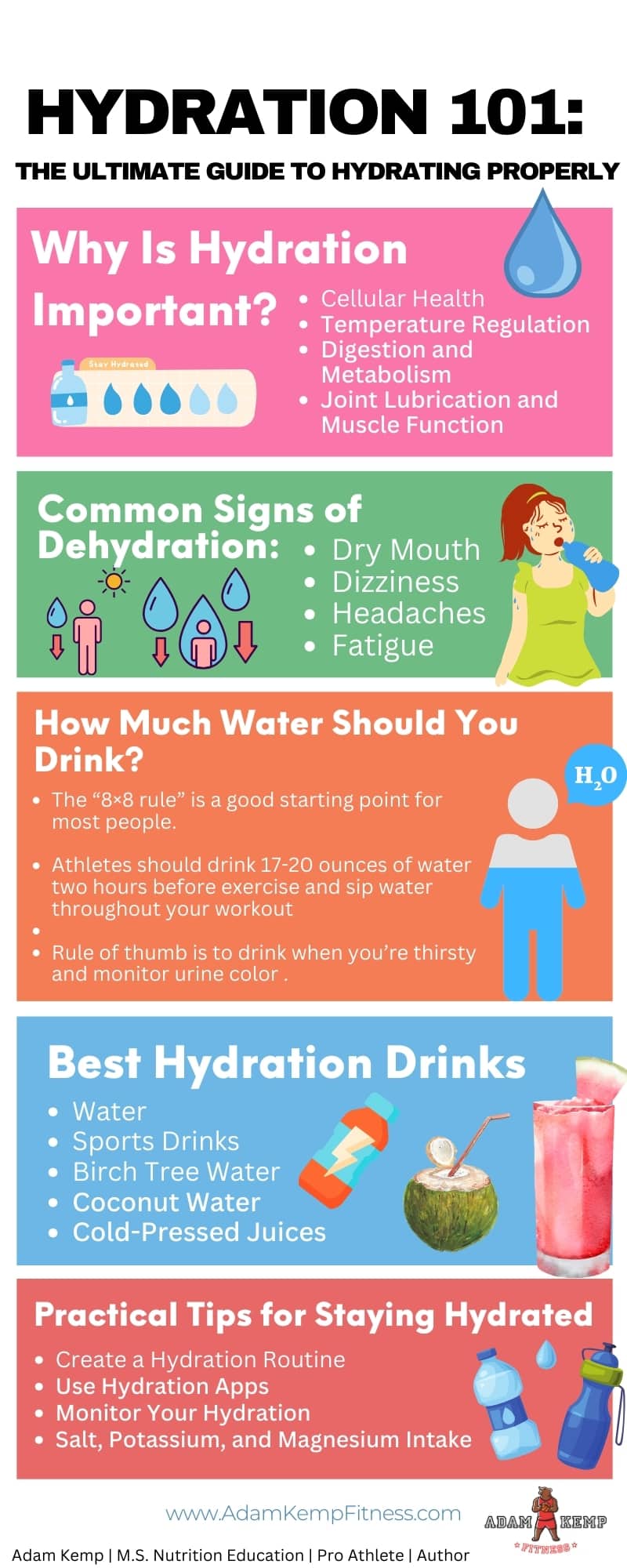
Time Your Meals to Support Your Goals
Meal timing isn’t just about when you eat; it’s about how food supports your training, sleep, and metabolism.
Eating a protein-rich, metabolism-boosting breakfast can help stabilize energy and improve satiety throughout the day, while post-workout meals should prioritize both protein and carbohydrates to maximize recovery.
For some, intermittent fasting can be useful for body composition goals, while others benefit more from balanced meals spaced every 3–5 hours.
Find the rhythm that supports your energy, training schedule, and lifestyle.
Supplement Where Needed — But Prioritize Food First
A food-first approach is ideal, but certain supplements can improve your health and fill in nutritional gaps. Consider:
- Protein powders (whey, casein, or plant-based) for convenience
- Creatine monohydrate for strength and recovery
- Magnesium for sleep, stress, and muscle relaxation (such as Qunol Magnesium Glycinate)
- Vitamin D supplements if sun exposure is low
- Omega-3s from fish oil to support inflammation and brain health
When comparing whole foods vs. supplements, it is clear that you should always aim to meet your nutrient needs from real food first, and supplements should only enhance, not replace a nutrient-dense diet.
Make Nutrition Sustainable and Enjoyable
No diet works if it isn’t enjoyable or sustainable.
Allow room for flexibility so you can enjoy cultural meals, occasional treats, and social occasions without guilt.
Focus on consistency, not perfection, and remember that long-term results are built from daily decisions, not quick fixes.
Meal prepping, cooking at home, and journaling your intake can help build awareness and improve adherence.
Most importantly, listen to your body and adjust your plan based on how you feel, perform, and recover.
Key Differences Between Women’s and Men’s Health and Fitness
While the core principles of health and fitness, movement, nutrition, recovery, and mindset apply to everyone, men and women experience important biological and hormonal differences that influence how they train, eat, recover, and respond to stress.
Understanding the differences betweens men’s and women’s health and fitness allows for smarter, more individualized approaches to wellness.
Hormonal Differences Affect Training and Recovery
One of the most significant distinctions lies in hormonal profiles.
- Men have higher levels of testosterone, which supports greater muscle mass, power output, and faster recovery from resistance training.
- Women, on the other hand, experience cyclical fluctuations in estrogen and progesterone, which can impact energy, endurance, strength, and mood across the menstrual cycle.
Women may benefit from periodized training that aligns with their hormonal phases, for example, focusing on strength and high-intensity work during the follicular phase, and emphasizing recovery, mobility, or lower-intensity training during the luteal phase.
Metabolism and Fat Distribution
Men generally have higher basal metabolic rates (BMR) due to greater lean muscle mass and lower body fat percentages.
Women naturally store more body fat, especially around the hips and thighs, due to hormonal and reproductive factors.
This difference is not a disadvantage but a biological adaptation that supports fertility and hormonal balance.
As a result, women may require more dietary fat for hormone regulation and often respond better to gradual, sustainable fat-loss approaches rather than aggressive dieting.
Bone Health and Injury Risk
Women are at a higher risk for osteoporosis and certain joint injuries, especially ACL tears, due to differences in joint structure, muscle recruitment patterns, and hormonal influences.
This makes resistance training, mobility work, and adequate calcium, magnesium, and vitamin D intake especially important for women across all life stages.
Men, while less prone to osteoporosis, are more likely to suffer from overuse injuries related to heavy strength or impact training if recovery is neglected.
Cardiovascular and Endurance Capacity
Men typically have larger hearts, more hemoglobin, and greater lung capacity, which can give them an advantage in aerobic performance.
However, women often excel in endurance-based sports due to superior fat metabolism during long-duration efforts and a greater tolerance for fatigue.
Both sexes benefit from cardiovascular training, but programming can be adapted based on individual goals, performance metrics, and how each body handles volume and intensity.
Mental Health Considerations
Women experience higher rates of anxiety and depression than men, often related to hormonal fluctuations and social factors.
However, women are also more likely to seek support and engage in holistic wellness practices such as journaling, mindfulness, or group fitness, which play an important role in mental health and emotional resilience.
Men often face cultural pressure to avoid vulnerability, which can impact stress management and mental fitness.
Encouraging open dialogue and including mindset training in fitness plans can help bridge this gap.
Nutrition Needs and Supplementation
While the foundations of nutrition are similar, women often need to pay closer attention to iron, calcium, and magnesium intake, particularly during menstruation or pregnancy.
Men may have higher overall caloric needs and often focus on muscle-building goals, requiring higher protein and creatine intake.
Supplementation strategies should be individualized.
For example, taking magnesium for sleep can benefit both men and women by improving sleep, muscle recovery, and stress management, but women may also need targeted supplements for bone health, hormonal balance, or menstrual cycle support.
How to Build a Life Filled with Health and Fitness
True health and fitness is a lifestyle, not a 30-day challenge, crash diet, or temporary motivation boost.
It’s about building sustainable habits that nourish your body, mind, and spirit over the long haul.
These core strategies create the foundation for long-term wellness, improved performance, and a greater quality of life at any age.
Daily Movement
Move your body every day, not just during workouts.
Whether it’s walking, stretching, resistance training, mobility drills, or recreational sports, consistent physical activity keeps your muscles engaged, metabolism active, and joints healthy.
Non-exercise activity (like taking the stairs, cleaning, or playing with your kids) also contributes to your daily energy expenditure and helps prevent the metabolic slowdowns associated with sedentary lifestyles.
Eat Real Food
Focus on nutrient-dense, minimally processed foods like colorful vegetables, leafy greens, fruits, legumes, lean meats, wild-caught fish, eggs, whole grains, and healthy fats like olive oil or avocados.
Avoid ultra-processed foods and added sugars as much as possible, as they contribute to inflammation and metabolic dysfunction.
A whole-food-based well-balanced diet provides the vitamins, minerals, antioxidants, and fiber your body needs to thrive, while also supporting gut health and hormonal balance.
Prioritize Sleep
Sleep is your body’s recovery window, as it’s when your brain consolidates memories, your muscles repair, and your hormones reset.
Aim for 7–9 hours of high-quality sleep each night, and establish a consistent bedtime and wake time to support your circadian rhythm.
Avoid blue light exposure in the evening, wind down with relaxing activities, and consider natural supplements like Qunol Magnesium Glycinate to support deeper, more restorative rest.
Stay Hydrated
Hydration impacts every aspect of health, from energy levels and focus to joint health and digestion.
Drink water consistently throughout the day, not just during meals or workouts.
The general guideline is around half your bodyweight in ounces per day, but you may need more if you’re active, sweating, or in hot climates.
Including electrolyte-rich fluids (like mineral water or naturally flavored sports drinks) can help replenish lost minerals during intense training sessions.
Manage Stress
Chronic stress erodes physical and mental health over time, contributing to inflammation, hormonal imbalance, poor digestion, and sleep issues.
Build daily stress-management habits such as prayer, journaling, deep breathing, gratitude practice, walking outdoors, or guided meditation.
Faith-based practices like prayer can be particularly powerful, offering a sense of peace and the reassurance that you are supported.
“Cast all your anxiety on Him because He cares for you” (1 Peter 5:7, NIV).
Set Realistic Goals

Set goals that are specific, measurable, achievable, relevant, and time-bound (SMART) to keep your progress focused and motivating.
Track your progress in a journal or digital app, celebrate small wins, and adjust as needed.
Health is not about perfection, it’s about consistency and progress.
Over time, these small changes add up to dramatic improvements in energy, mood, fitness, and overall well-being.
Final Thoughts: Understanding the Power and Value of Health and Fitness
Health and fitness are more than just routines or goals; they are essential tools for living a longer, stronger, and more meaningful life.
When you prioritize your physical and mental well-being, you unlock greater energy, sharper focus, emotional resilience, and a deeper connection to your purpose.
From preventing chronic disease to enhancing daily performance, the impact of a healthy lifestyle is both immediate and long-lasting.
While the path may not always be perfect, the pursuit itself builds discipline, self-awareness, and confidence that carry over into every other area of life.
Whether you’re a beginner taking your first steps or a seasoned athlete refining your edge, remember that true fitness isn’t just about how you look; it’s about how you live, how you feel, and how well you function over time.
The daily choices you make around movement, nutrition, rest, and mindset shape your future.
Invest in your health like your life depends on it — because it does!
Ready to take the next step in your health and fitness journey?
Subscribe to my email list for occasional evidence-based tips, personal insights, and exclusive updates.
As a thank you, you’ll receive my 60+ page 7-Day Detox Plan completely free. This isn’t a crash diet or a quick fix; it’s a sustainable reset designed to help you rebuild healthy habits, improve energy, and rediscover your best self.
Subscribe to My Newsletter
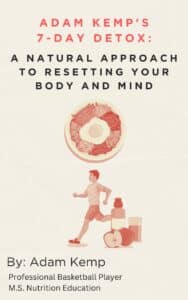
Subscribe to my newsletter to receive occasional updates on new articles and health and fitness tips. Also, you will receive my 60-page eBook on resetting your body and mind in 7-days for FREE!
Start fresh. Stay consistent. Become the healthiest version of you!
